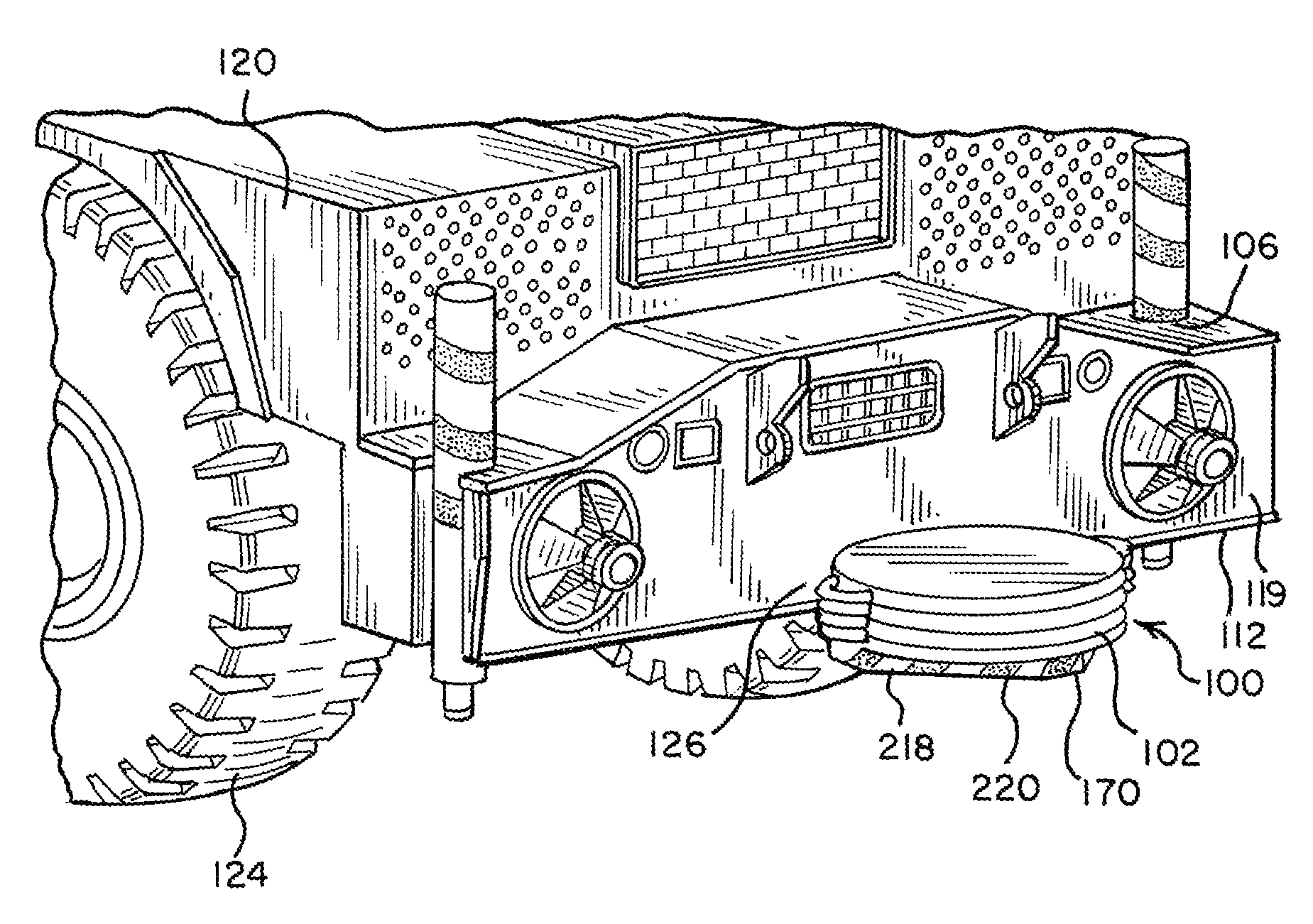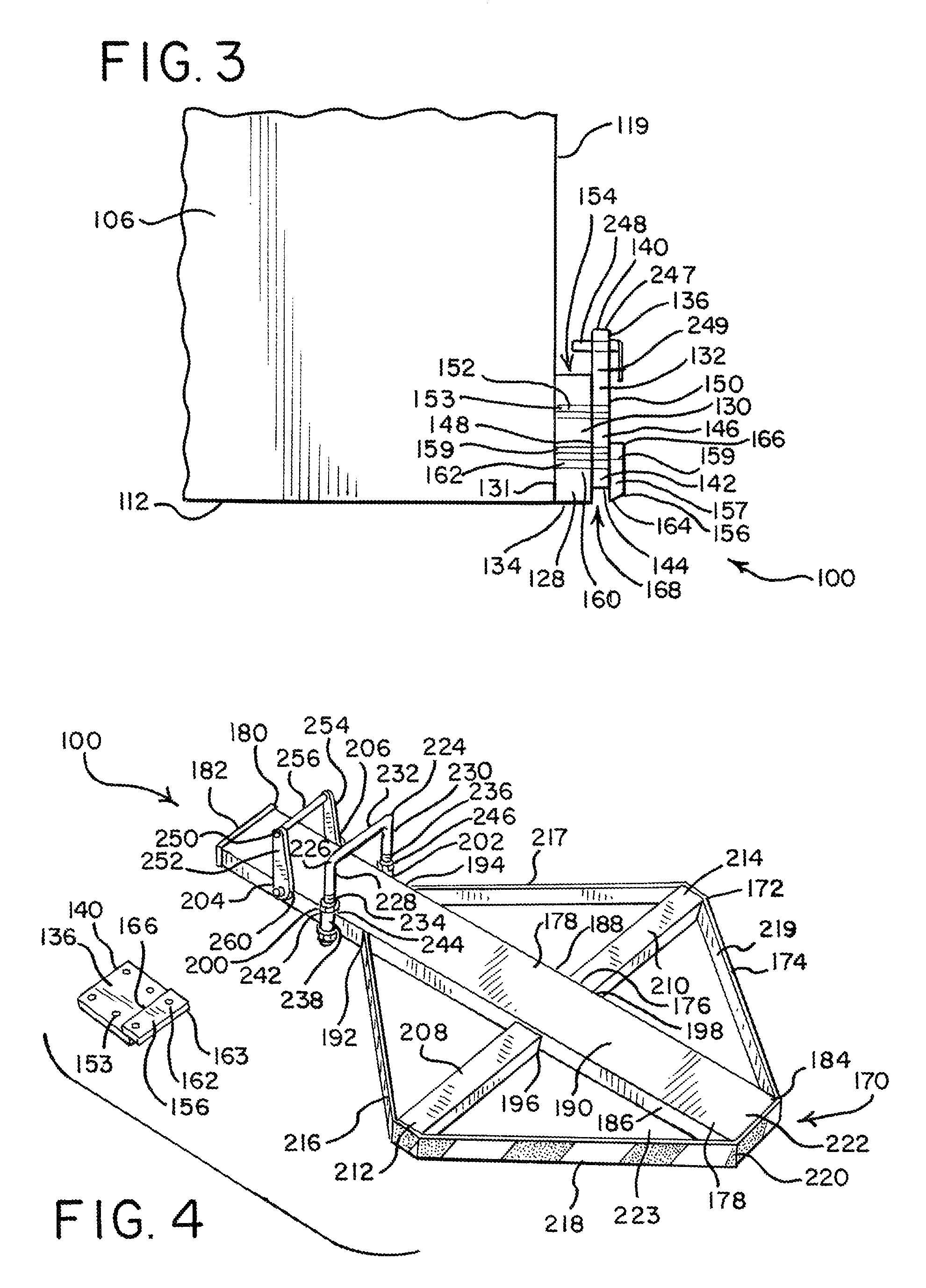Crane mat carrier
a mat carrier and crane technology, applied in the field of cranes, can solve the problems of crane mats and pads being put under enormous loads, physical transportation, and lack of wheels or self-locomotion abilities of station cranes, and achieve the effects of convenient transportation, convenient use, and convenient us
- Summary
- Abstract
- Description
- Claims
- Application Information
AI Technical Summary
Benefits of technology
Problems solved by technology
Method used
Image
Examples
Embodiment Construction
[0040]The following is a detailed description and explanation of the preferred embodiments of the invention and best modes for practicing the invention.
[0041]As shown in FIG. 14, a carrier system 100 can comprise a crane mat carrier system for transporting, storing and supporting stabilizer (stabilizing) devices 102 such as crane mats, crane pads and other items 104, which can comprise accessory items or accessories, for use with a crane 106 or other construction equipment 108 at the lift site, construction site, or other job site. The crane can have: a chassis 110 with an underside 112 providing a bottom, a cab 114 which can extend upwardly from the underside with controls for the operator to control and operate the boom 115 about a rotatable derrick 116 as well as control movement of the crane. The crane can also have a platform providing a deck 117, walls 118-121 which can extend upwardly from the bottom, and crane supports 124 for raising and elevating the underside of the crane...
PUM
 Login to View More
Login to View More Abstract
Description
Claims
Application Information
 Login to View More
Login to View More - R&D
- Intellectual Property
- Life Sciences
- Materials
- Tech Scout
- Unparalleled Data Quality
- Higher Quality Content
- 60% Fewer Hallucinations
Browse by: Latest US Patents, China's latest patents, Technical Efficacy Thesaurus, Application Domain, Technology Topic, Popular Technical Reports.
© 2025 PatSnap. All rights reserved.Legal|Privacy policy|Modern Slavery Act Transparency Statement|Sitemap|About US| Contact US: help@patsnap.com



